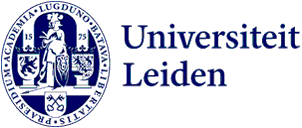18 search results for “supernova” in the Public website
-
From supernovae to galaxy clusters: observing the chemical enrichment in the hot intra-cluster medium
Promotor: Jelle S. Kaastra Co-promotor: Jelle de Plaa
-
Time Domain Imaging of Transient and Variable Radio Sources
This thesis focuses on the study of transient and variable radio sources in the universe.
-
Clues from stellar catastrophes
Promotores: S.F. Portegies Zwart, E. M. Rossi
-
Astronomer Joe Callingham testifies against killer stars in new show on Discovery Channel
On Friday evening 17 September, Leiden astronomer Joe Callingham can be seen in a new series on Discovery channel. Killers of the Cosmos is about different deadly dangers lurking in the depths of space. Asteroids, cosmic debris, electromagnetic weapons… The show takes a film-noir approach to these threats,…
-
Withstanding the cold: energy feedback in simulations of galaxies that include a cold interstellar medium
Understanding how galaxies form, interact, and evolve comes largely from comparing theory predictions with observational data. Numerical simulations of galaxies provide the most accurate approach to testing the theory, as they follow the non-linear evolution of gas and dark matter in great detail and…
-
The Great Collapse
Promotor: Prof.dr. S.F. Portegies Zwart
-
Tales of Orion: the interplay of gas, dust, and stars in the interstellar medium
Promotores: Prof.dr. A.G.G.M. Tielens & Prof.dr. L. Kaper (UvA)
-
Orion's Dragon and Other Stories
Stellar feedback is a crucial ingredient in the evolution of galaxies.
-
Multiple star formation: chemistry, physics and coevality
Multiple stars, that is two or more stars composing a gravitationally bound system, are common in the universe.
-
Far from home: the science exploitation of the fastest Milky Way stars
The Sun and all the stars in the night sky reside in the Milky Way galaxy. In the at-rest reference frame of the Galaxy, typical stars travel with velocities of about 100-200 kilometres per second.
-
Simulating the birth environment of circumstellar discs
Circumstellar discs are the reservoirs of gas and dust that surround young stars and have the potential to become planetary systems.
-
A piece of the Universe in the computer
Simulations of galaxies help researchers understand astronomical observations better. The EAGLE simulation, a large project in which Leiden astronomers play a leading role, shows the evolution of the Universe, from just after the Big Bang to the present day.
-
Slovenian and Czech high school students visit Leiden University
Sixty-four high school students from Slovenia, Czech Republic and The Netherlands have visited Leiden University in the week of 7-11 November, as part of the Talent Education Project. They split in eight groups, of which some went to the science faculty to conduct research projects.
-
Shedding light on the dark side of the universe
It must be there. We just cannot see it: mysterious dark matter and dark energy in the universe. Henk Hoekstra is one of the many cosmologists who would love to know what exactly these substances consist of. He has received a European research grant of 1.3 euro million to find out.
-
Climate and elections: these were your top stories from 2023
The year 2023 saw the earthquake in Turkey and Syria, the Wagner Group rebellion and wildfires and floods as all the weather records were smashed. Our most-read stories were about the climate crisis and the elections: here’s the list.
-
Gravitational Lenses measure Universe Expansion
It's one of the big cosmology debates: the universe is expanding, but how fast exactly? Two available measurements yield different results. Leiden physicist David Harvey adapted an independent third measurement method, using the light warping properties of galaxies predicted by Einstein. He published…
-
Giant cosmic tsunami wakes up comatose galaxies
Galaxies are often found in clusters, which contain many “red and dead” members that stopped forming stars in the distant past. Now, an international team of astronomers, led by Andra Stroe of Leiden Observatory and David Sobral of Leiden and the University of Lisbon, has discovered that these comatose…
-
Multimessenger astronomy to study the structure of Milky Way
For centuries, astronomers have studied the universe by collecting light signals. Since 2015, the confirmation of an important prediction of Einstein allows us to explore the universe in a new way: through gravitational wave radiation. Astronomy PhD candidate Valeriya Korol proposes to use these gravitational…
